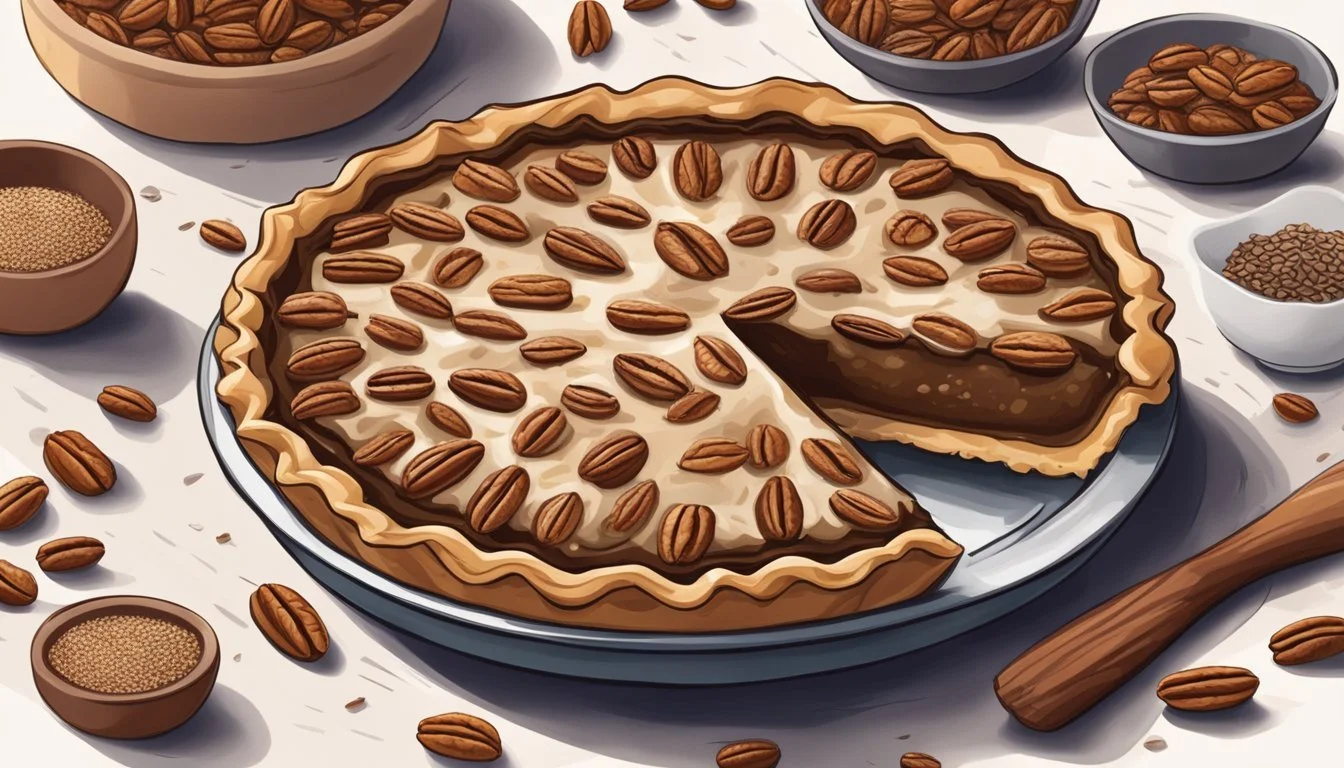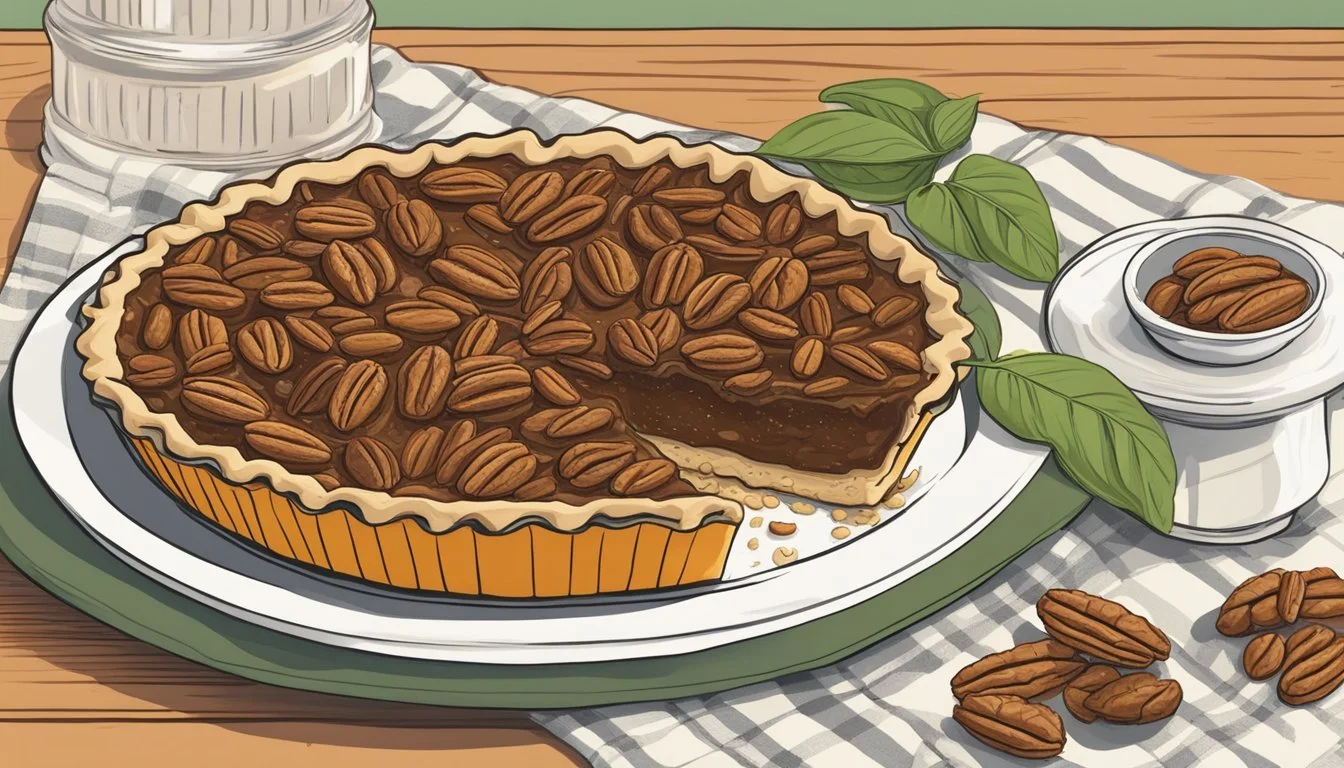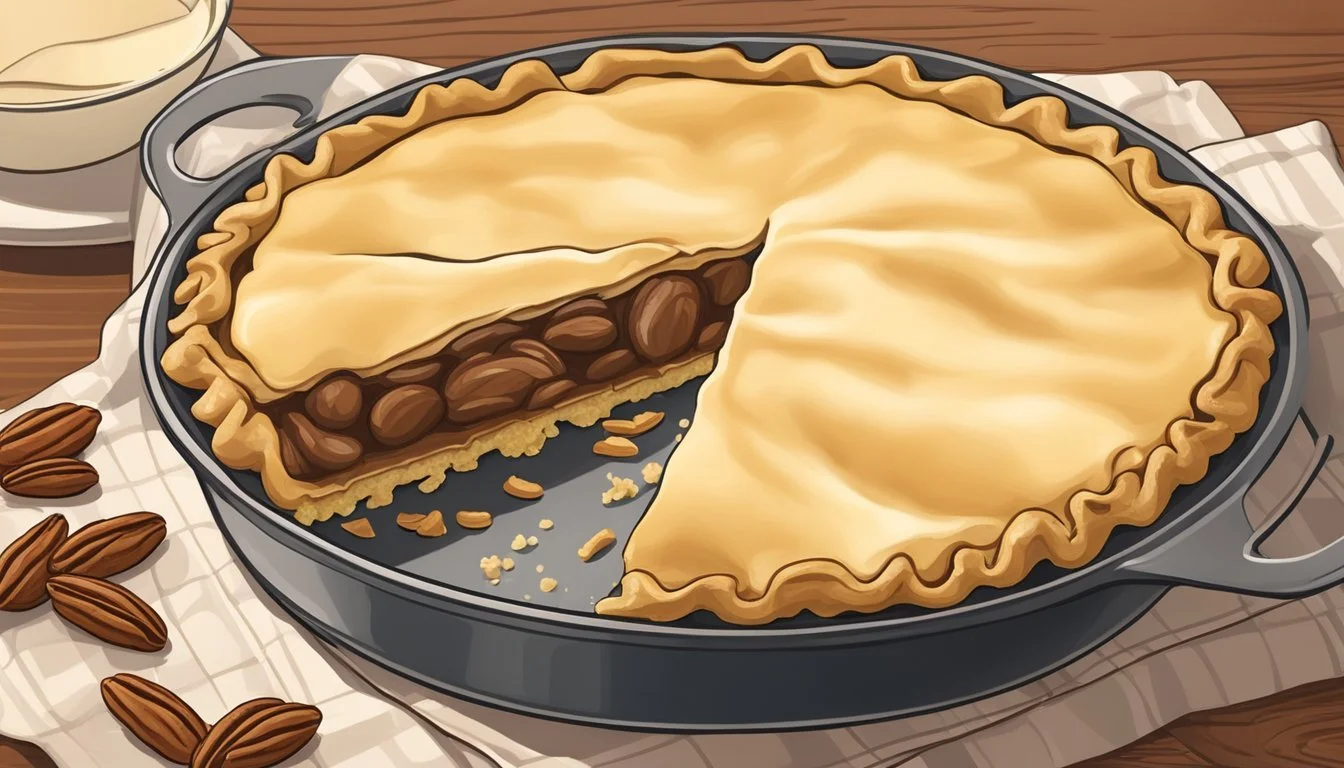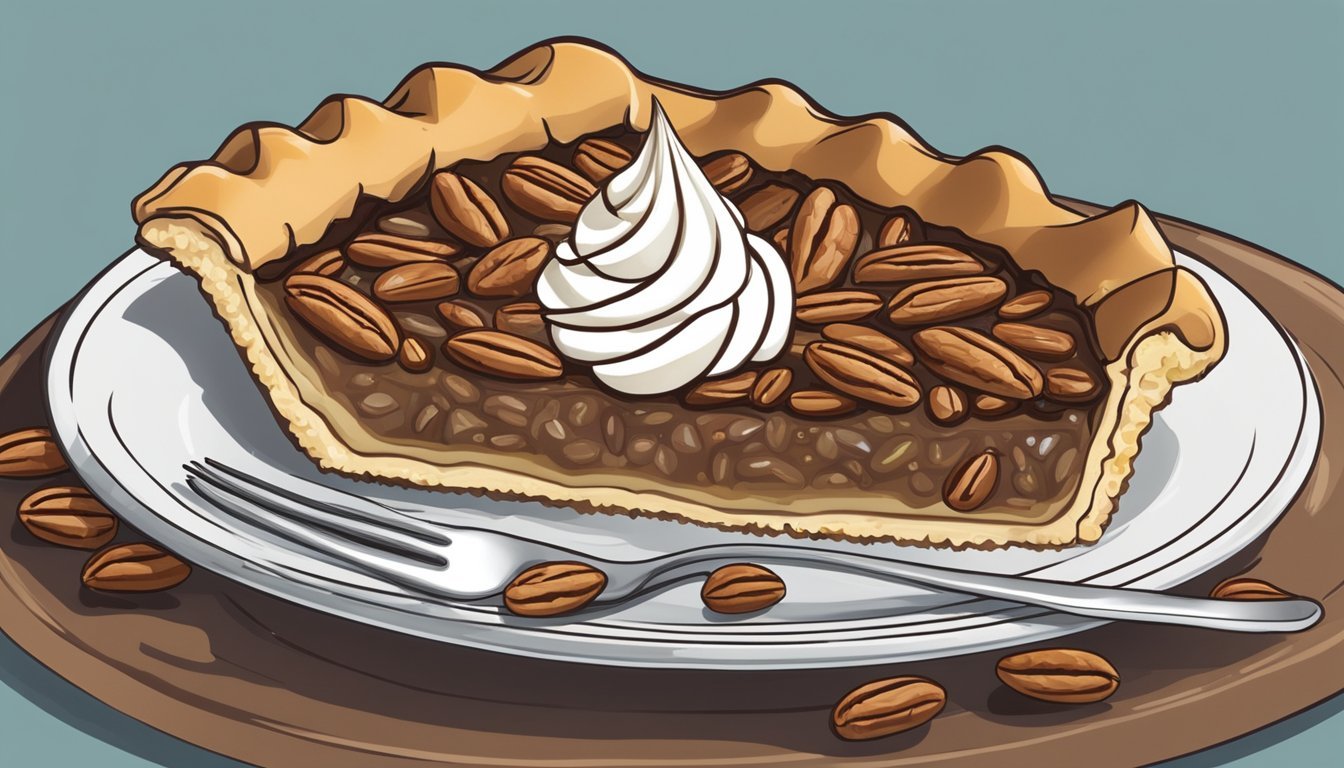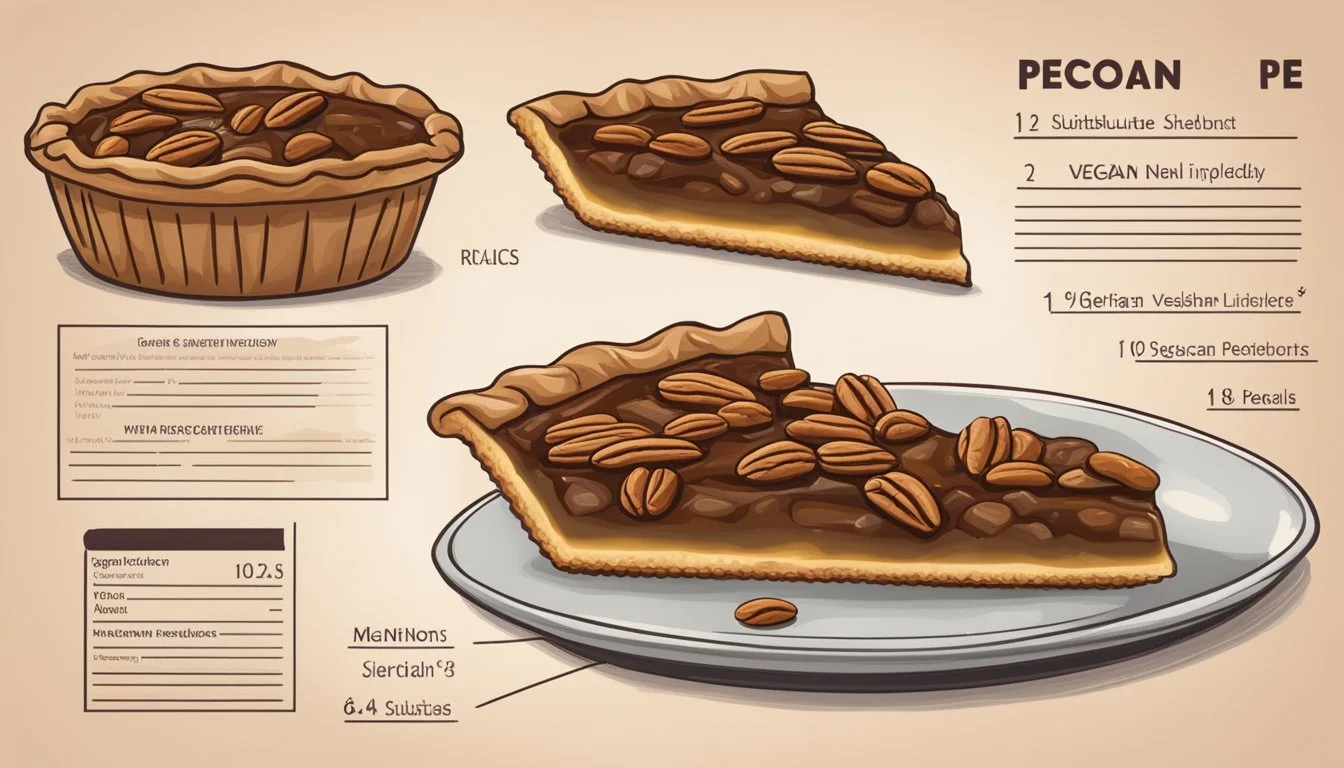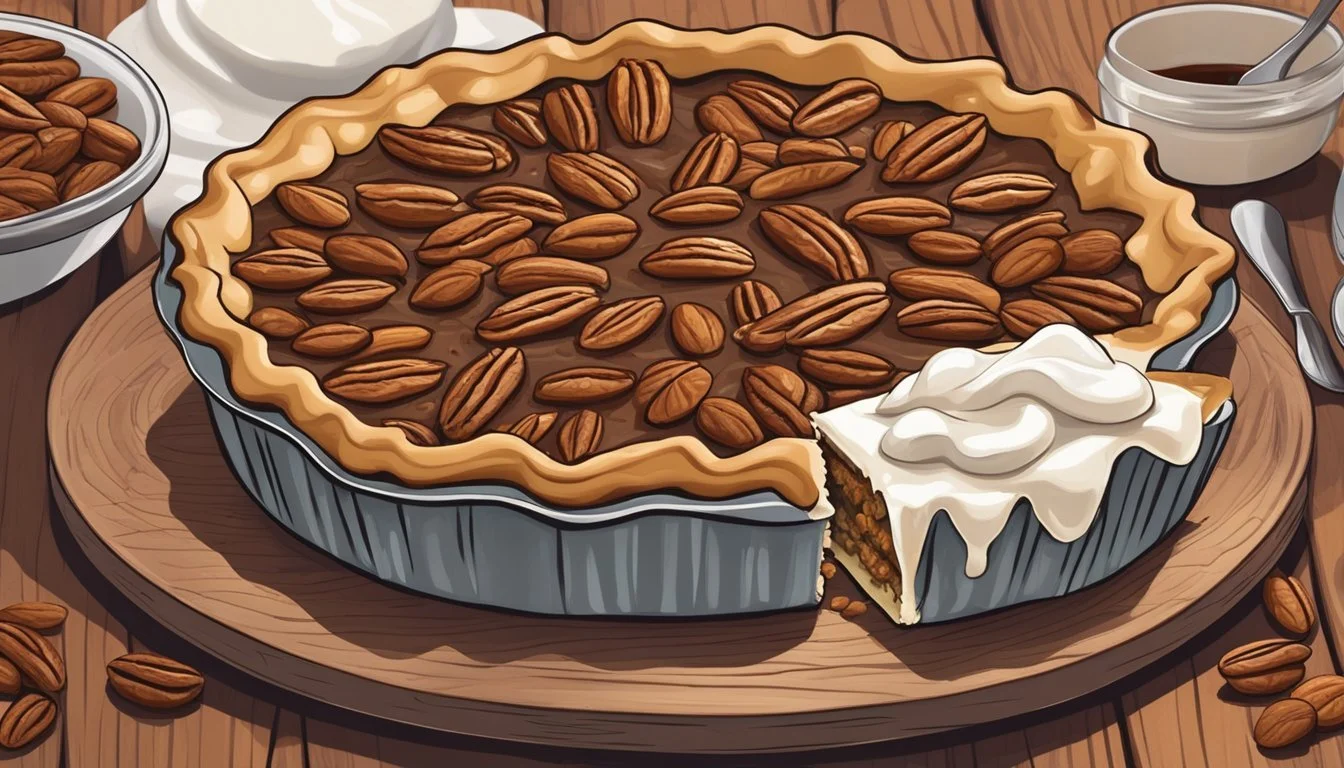Is Pecan Pie Vegan?
Understanding Traditional Ingredients and Plant-Based Alternatives
Traditional pecan pie is not considered vegan, as it typically includes eggs and butter, both of which are animal-derived ingredients. This rich dessert, often beloved for its sticky, sweet filling and crunchy nut topping, poses a challenge for those following a plant-based diet who wish to enjoy its unique texture and flavor. However, the growing interest in veganism has inspired a wave of creative adaptations that replicate the classic taste of pecan pie using animal-free ingredients.
Creative substitutions have made it possible for vegans to enjoy a version of pecan pie that aligns with their dietary choices. Replacing eggs with ingredients such as ground flaxseeds or corn starch mixed with water can maintain the binding properties necessary for a coherent filling. Vegan butter or coconut oil can serve as an alternative to dairy butter, providing the required fat without utilizing animal products.
The development of vegan pecan pie recipes signals a broader shift in culinary practices, as more people seek out methods to recreate traditional dishes without animal ingredients. This innovation not only caters to vegans but also offers options for those with allergies or dietary restrictions. With careful consideration of ingredients and baking techniques, vegan pecan pie can be a delightful, inclusive dessert that everyone can enjoy.
Understanding Veganism
Veganism is more than a diet; it's a lifestyle choice that excludes all forms of animal exploitation and cruelty. This includes a focus on plant-based ingredients and the omission of all animal products, specifically in terms of food, dairy, eggs, and sometimes even honey. When it comes to vegan baking, this philosophy is carried through with the use of alternative ingredients to ensure that the end product is free from animal-derived components.
Vegan Ingredients
In a vegan diet, traditional baking components like butter, milk, and eggs are replaced with plant-based alternatives. Vegan butter is commonly used as a substitute for dairy butter; it is crafted from plant oils and often fortified with vitamins found naturally in animal butter. For example, vitamin A and vitamin D might be added to replicate the nutritional profile.
Vegan pie crust is another staple in vegan baking, ensuring the base of desserts like pecan pie is dairy-free and egg-free. The crust can be made with a blend of flour, vegan butter, salt, sugar, and ice water, as these components work together to mimic the texture and taste of a traditional pie crust without any animal products involved.
Health Benefits of Vegan Baking
Switching to vegan baking can offer a variety of potential health benefits. Vegan baked goods usually contain less saturated fat than their non-vegan counterparts, primarily because plant-based fats are often unsaturated. This can contribute to better heart health.
Vegan recipes may also feature a higher amount of fiber, particularly when whole grains, nuts, seeds, or fruits are utilized. Fiber is essential for digestive health and can assist in maintaining a healthy weight by promoting a feeling of fullness.
A well-planned vegan diet should also take into account essential nutrients that are commonly found in animal products, such as protein, calcium, and iron. These nutrients can be sourced from a variety of plant-based foods like nuts, seeds, legumes, and fortified products, ensuring that the nutritional content is balanced and conducive to good health. Similarly, attention should be paid to sodium levels to keep them within a healthy range, especially when using processed ingredients.
Vegan Pecan Pie Ingredients
When creating a vegan pecan pie, the selection of ingredients is crucial. Traditional pecan pie ingredients often include eggs and butter, but vegan versions use plant-based alternatives to replicate the classic taste and texture.
Choosing the Right Pecans
The star of the pie, pecans, should be fresh and high quality. While the type of pecan can vary based on personal preference or regional availability, it's important that they are:
Fresh: Stale pecans can result in a less flavorful pie.
Unsalted: To control the pie's overall salt content.
Sweeteners in Vegan Pecan Pie
Sweeteners provide the rich, caramelized flavor characteristic of pecan pie. Here are vegan-friendly options:
Brown Sugar: Essential for depth of flavor.
Maple Syrup: Pure maple syrup is preferred for its natural sweetness.
Agave: A plant-based syrup that can be used as an alternative to corn syrup.
A direct comparison of sweeteners:
Sweetener Note Brown Sugar Adds moisture and a molasses-like undertone. Maple Syrup Adds a distinct, rich flavor. Agave A less traditional, but vegan option.
Binders and Thickeners
Without eggs, vegan pecan pies need other ingredients to achieve the right consistency. These can include:
Cornstarch: Acts as a thickener that gives the filling body.
Tapioca Starch: Another thickening agent that can lend a slightly chewy texture.
Arrowroot: An alternative to cornstarch that can create a glossy finish.
These thickeners work by absorbing moisture and swelling as they cook, which helps to set the pie filling.
Creating the Perfect Vegan Pie Crust
Crafting a vegan pie crust is an essential step in pie making, and it can be made flaky and delicious without the use of animal products. With the right ingredients and techniques, anyone can create a perfect base for their pie.
Gluten-Free Crust Options
For individuals who are avoiding gluten, a variety of gluten-free flours are available that can be used to make a delicious pie crust. A popular choice for a gluten-free vegan pie crust recipe is a mix of gluten-free all-purpose flour and almond flour to provide structure and a nutty flavor. To ensure the dough holds together without gluten, xanthan gum may be added. Here's a basic framework for gluten-free vegan pie crust:
1 1/2 cups gluten-free all-purpose flour
1/2 cup almond flour
1 tsp xanthan gum (if not included in the gluten-free flour mix)
1/2 tsp salt
1/2 cup vegan butter or coconut oil (chilled)
4-6 tbsp ice water
First, combine the dry ingredients, then cut in the chilled vegan butter until the mixture resembles coarse breadcrumbs. Gradually add ice water and gently combine until a dough forms.
Rolling and Shaping the Crust
After preparing the vegan pie crust dough, it’s time to roll and shape it into the perfect base for your pie. Use the following steps:
Chill the dough for at least one hour, as a cold dough is easier to work with and will result in a more flaky pie crust.
Flour your working surface and rolling pin to prevent sticking.
Roll Out the dough evenly from the center outwards, aiming for a thickness of about 1/8 inch and making it a few inches wider than your pie dish.
Transfer the dough to your pie dish by gently folding it in half or rolling it onto the rolling pin and then unrolling or unfolding it over the dish.
Press the dough into the pan, making sure it fits snugly against the sides and bottom.
Trim any excess dough from the edges with a knife, and crimp the edges if desired for a decorative touch.
By keeping the gluten-free dough chilled and working quickly to roll and shape it, the crust will maintain its shape better when baked and result in a crispier texture.
Assembling and Baking the Pie
In crafting a vegan pecan pie, the focus rests on preparing a sweet and rich filling and employing precise baking techniques to achieve the perfect texture and flavor in the absence of traditional ingredients.
Filling Preparation
The filling begins with a vegan butter, brown sugar, and maple syrup mixture heated in a saucepan until it simmers. One's skill in combining these elements is crucial, ensuring that the sweet concoction thickens slightly, which usually takes around 1-2 minutes. In a separate bowl, water, cornstarch, and vanilla extract form a slurry that is then combined with the simmering sweet mixture. Once these components are melded together, pecans are folded in, creating the heart of the pie.
Baking Techniques
With the oven preheated to 350°F (175°C), it's time to focus on the crust. A 9-inch pie dish lined with a rolled-out vegan pie crust must be pre-baked using pie weights or dried beans to prevent the bottom from puffing up; this step is commonly referred to as "blind baking." To pre-bake, one should prick the crust with a fork, line it with foil or parchment, and fill with weights, baking for around 10 minutes or until the crust is dry and set.
Once the crust is pre-baked, the filling is poured into the crust, and the pie is placed on a baking sheet to ensure even heat distribution during the bake. It’s essential to bake until the filling is set around the edges but still slightly wobbly in the center. This usually takes about 45 to 55 minutes. After baking, one must allow the pie to cool on a wire rack for a few hours, where the residual heat finishes the cooking process without the aid of the oven, ensuring the filling firms up to the ideal consistency.
Serving and Presentation
When serving vegan pecan pie, offering a range of toppings and mastering the art of plating can elevate the dessert experience. These enhancements not only add to the flavor but also make the presentation appealing to the eye.
Toppings and Enhancements
For those seeking a decadent finish, a dollop of vegan whipped cream or coconut whipped cream is often a popular choice. These can either be homemade or purchased from a store; ensure they are indeed vegan to align with the pie's dietary considerations. Chocolate shavings or a light dusting of cocoa can add a rich depth. For added spice and aroma, a sprinkle of cinnamon complements the nutty profile of the pie. Chopped pecans or artistically placed pecan halves can be used for garnish, providing a delightful crunch.
Vegan Whipped Cream: A light and fluffy choice for those conscious about dairy-free alternatives.
Chocolate: Fine shavings or curls to create a visual and taste contrast.
Cinnamon: A pinch can be sprinkled on top for added warmth in flavor.
Pecans: Use halves for decoration or chopped pecans for texture.
Plating the Pie
Plating is crucial for a visually stunning presentation. A clean, white plate serves as a blank canvas that makes the pie's colors pop. Servings should be sliced cleanly, revealing the rich filling and ensuring each plate has an equal portion, mindful of the calories in each serving. To infuse a subtle flavor enhancement, a drizzle of vanilla sauce around the plate or atop the pie slice adds elegance. When placing the slice on the plate, leave enough space for any additional toppings or sauces, allowing the pie to be the star of the show.
Plate: A classic and contrasting backdrop for the pie.
Slice: A sharp knife will ensure clean cuts for an impressive layered look.
Vanilla: A touch of vanilla sauce can be drizzled for an aromatic allure.
Dietary Considerations and Substitutions
Adapting the classic pecan pie to meet various dietary needs involves careful consideration of ingredients for substitutions that maintain the pie's character while accommodating health and allergy concerns.
Reducing Sugar and Caloric Content
For those aiming to reduce sugar and calories, traditional sweeteners can be replaced with healthier alternatives. Maple syrup or coconut sugar can serve as natural sweeteners, often requiring less quantity due to their pronounced sweetness. Additionally, using ingredients like almond butter or flax eggs provides binding qualities without the excess sugar found in corn syrups. Recipes may also incorporate corn starch to achieve the desired consistency without overloading on sugar.
Nut-Free and Allergy-Safe Alternatives
Creating a nut-free version of pecan pie can be challenging due to the fundamental role of pecans. However, substitutes such as sunflower seeds or pumpkin seeds provide a similar crunch and are typically safe for those with nut allergies. They must ensure an egg-free and dairy-free recipe, which can be achieved by using flax eggs in lieu of chicken eggs and non-dairy butter or oils. For a gluten-free crust, options include gluten-free flour blends. Care should be taken to avoid cross-contamination with allergens in the kitchen to ensure safety for those with allergies.
Storage and Preservation
Proper storage of vegan pecan pie is essential for maintaining its freshness and flavor. Vegan pecan pie should be stored in an airtight container to retain its moisture and prevent it from absorbing odors from the refrigerator.
Storing Leftovers
Leftover vegan pecan pie can keep well in the fridge for up to four days. It's important to:
Let the pie cool completely before storing to prevent condensation.
Wrap it tightly in plastic wrap or aluminum foil, or place it in an airtight container.
Keep it in the fridge to maintain optimal freshness.
Freezing and Thawing Pecan Pie
For longer storage, vegan pecan pie can be frozen. Here's how to freeze and thaw it properly:
Freeze: Allow the pie to cool completely, then wrap it securely in foil or plastic wrap and place it in an airtight container or a resealable freezer bag. Label with the date, and it can be stored for up to two months.
Thawing: Thaw the pie overnight in the refrigerator, not at room temperature, to keep the filling intact and prevent bacterial growth. Eat within the following 24 hours for the best quality.
Vegan Dessert Alternatives
Vegan dessert alternatives have evolved remarkably, offering plant-based versions of beloved classics and imaginative new creations. They cater to a variety of tastes, ensuring that everyone can enjoy sweet indulgences regardless of dietary preferences.
Vegan Variations of Classic Pies
Classic pies such as apple pie, pumpkin pie, and sweet potato pie have traditionally been staples at gatherings, especially around Thanksgiving. Their vegan counterparts replace dairy and eggs with plant-based ingredients without sacrificing taste. For instance, vegan apple pie might use a crust made with vegan butter and a filling sweetened with maple syrup. Similarly, for vegan pumpkin pie, cooks can replace condensed milk with a creamy blend of cashews or tofu. Here's a simple guideline for a vegan crust that can be used for these pies:
Ingredients:
2 1/2 cups all-purpose flour
1 tsp salt
1 cup vegan butter, cold and cubed
1/2 cup ice water
Instructions:
Combine flour and salt. Cut in vegan butter until mixture resembles coarse crumbs.
Gradually add ice water, stirring until dough comes together.
Wrap in plastic and chill before rolling out for your pie of choice.
Easy vegan pecan pie is another delectable alternative, often utilizing a filling that includes flax eggs, plant-based butter, and a sweetening agent like corn syrup or maple syrup. This allows vegans to enjoy the rich, nutty flavor of the classic course with a cruelty-free twist.
Innovative Vegan Desserts
Beyond traditional pies, there are an array of innovative vegan desserts that push the boundaries of plant-based cuisine. These desserts often incorporate unorthodox ingredients and methods to achieve similar textures and flavors to non-vegan options. They redefine standard dessert courses, offering unique tastes and experiences. For example, chefs might create a dairy-free chocolate mousse using aquafaba, the liquid from cans of chickpeas, to replicate the airiness typical of its egg-based counterpart.
Creativity in vegan desserts also extends to the use of natural sweeteners and alternative flours, widening the scope for those who are health-conscious or have dietary restrictions. One may encounter:
Pumpkin Spice Latte Cake: Pumpkin puree and espresso combined in a moist cake, topped with vegan cream cheese frosting.
Salted Caramel Coconut Panna Cotta: A chilled, set dessert made with coconut cream, sweetened with vegan caramel and a hint of sea salt.
Each course is a celebration of flavor that can stand proudly alongside, or even surpass, its traditional counterparts. These culinary innovations ensure that vegan cuisine is not just an alternative but a first choice for those seeking indulgence without animal products.


